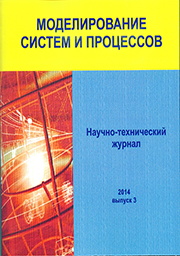AO "Nauchno-issledovatel'skiy institut elektronnoy tehniki"
Russian Federation
UDC 658.51
The article discusses the important stages of the process of developing a digital device of microelectronics associated with testing and compiling models of digital blocks. The work was carried out as part of the creation of a domestic CAD system designed for the design of various digital microelectronics devices. The presented works were carried out by VSFEU together with ROSELECTRONICS Holding. The authors have developed a model of a digital microprocessor based on SYNTACORE's SCR1 core, a 32-bit fully functional RISC-V architecture model with an IMC instruction set. To simulate the RTL model, an XCELIUM simulator with a SimVision visualization shell from Cadence was used, which allows a complete analysis of the RTL model. The core model was compiled using the Genus software from the Cadence development package. Next, the model was configured and optimized according to the time parameters according to the specified restrictions on the microprocessor being developed. It is important to note that effective testing and compilation of digital block models requires the use of specialized tools, such as automated testing tools and version control systems. This makes it possible to significantly speed up the development process and improve the quality of the final product. As a result, a package of files for Innovus software was formed to create a topology.
XCELIUM simulator, SimVision, RTL (Register Transfer Level), computer-aided design system (CAD), Cadence, System Verilog, Tool Command Language (TCL).
1. Analiz problem modelirovaniya elementov KMOP BIS / V.K. Zol'nikov, S.A. Evdokimova, A.V. Fomichev [i dr.] // Modelirovanie sistem i processov. - 2018. - T. 11, № 4. - S. 20-25.
2. Proektirovanie interfeysov sboeustoychivyh mikroshem / V.K. Zol'nikov, N.V. Mozgovoy, S.V. Grechanyy [i dr.] // Modelirovanie sistem i processov. - 2020. - T. 13, № 1. - S. 17-24.
3. The performance and energy efficiency potential of FPGAs in scientific computing / T. Nguyen [et al.] // 2020 IEEE/ACM Performance Modeling, Benchmarking and Simulation of High Performance Computer Systems (PMBS). - IEEE, 2020. - S. 8-19.
4. Corperation A. Cyclone IV FPGA Device Family Overview // Cyclone IV Device Handbook. - 2013. - T. 1.
5. Vtr 8: High-performance cad and customizable FPGA architecture modelling / K.E. Murray [et al.] // ACM Transactions on Reconfigurable Technology and Systems (TRETS). - 2020. - T. 13, №. 2. - S. 1-55.
6. Kalms, L. HiFlipVX: an Open Source High-Level Synthesis FPGA Library for Image Processing / L. Kalms, A. Podlubne, D. Göhringer // Lecture Notes in Computer Science. - 2019. - Vol. 11444. - Pp. 149-164.
7. Introduction of rapid prototyping in solving applied problems in production / V.A. Brykin, A.P. Voroshilin, P.A. Uhov, A.V. Ripetskiy // Periodico Tche Quimica. - 2020. -T. 17, № 35. - Pp. 354-366.
8. An overview of today’s high-level synthesis tools / W. Meeus [et al.] // Design Automation for Embedded Systems. - 2012. - Vol. 16. - Pp. 31-51.
9. Daoud, L. A survey of high level synthesis languages, tools, and compilers for reconfigurable high performance computing / L. Daoud, D. Zydek, H. Selvaraj // Advances in Intelligent Systems and Computing. - 2014. - Vol. 240. - Pp. 483-492.
10. A survey and evaluation of FPGA high-level synthesis tools / R. Nane [et al.] // IEEE Transactions on Computer-Aided Design of Integrated Circuits and Systems. - 2016. - Vol. 35, is. 10. - Pp. 1591-1604.
11. Design and research of the behavioral model for the modular reduction device / Y.Zh. Aitkhozhayeva [et al.] // Eurasian Physical Technical Journal. - 2020. - Vol. 17. - Pp. 151-156. - DOI:https://doi.org/10.31489/2020No1/151-156.
12. Tynymbayev, S.T. High speed device for modular reduction / S.T. Tynymbayev, Y.Zh. Aitkhozhayeva, S. Adilbekkyzy // Bulletin of National Academy of Sciences of the Republic of Kazakhstan. - 2018. - No. 6 (376). - Pp. 147 - 152.
13. Adilbekkyzy, S. Modeling of the partial reminder former of the modular reduction device / S. Adilbekkyzy, Y.Zh. Aitkhozhayeva, S.T. Tynymbayev // Eurasian Union of Scientists. - 2019. - Vol. 6 (63). - Pp. 47 - 51.
14. Development and modeling of schematic diagram for the modular reduction device / S.T. Tynymbayev, Y.Zh. Aitkhozhayeva, S. Adilbekkyzy [et al.] // Problems of Informatics. - 2019. - No. 4. - Pp. 42-52.
15. Metod i algoritm poiska defektov dlya radiacionno-stoykih mikroshem / K.V. Zol'nikov [i dr.] // Voprosy atomnoy nauki i tehniki. Seriya: Fizika radiacionnogo vozdeystviya na radioelektronnuyu apparaturu. - 2014. - № 2. - S. 10-13.
16. Metody shemotehnicheskogo modelirovaniya KMOP SBIS s uchetom radiacii / K.V. Zol'nikov [i dr.] // Voprosy atomnoy nauki i tehniki. Seriya: Fizika radiacionnogo vozdeystviya na radioelektronnuyu apparaturu. - 2014. - № 2. - S. 5-9.
17. XLS. - URL: https://github.com/google/xls(data obrascheniya: 02.11.2022).
18. Bluespec Compiler. - URL: https://github.com/B-Lang-org/bsc(data obrascheniya: 02.11.2022).
19. IDCT algorithm implementations. - URL: https://github.com/ispras/hls-idct(data obrascheniya: 02.11.2022).
20. de Dinechin, F. Designing custom arithmetic data paths with FloPoCo / F. de Dinechin, B. Pasca // IEEE Design & Test of Computers. - 2011. - Vol. 28, Is. 4. - Pp. 18-27.
21. Chisel. - URL: https://github.com/chipsalliance/chisel3(data obrascheniya: 02.11.2022).
22. MyHDL. - URL: https://www.myhdl.org(data obrascheniya: 02.11.2022).





